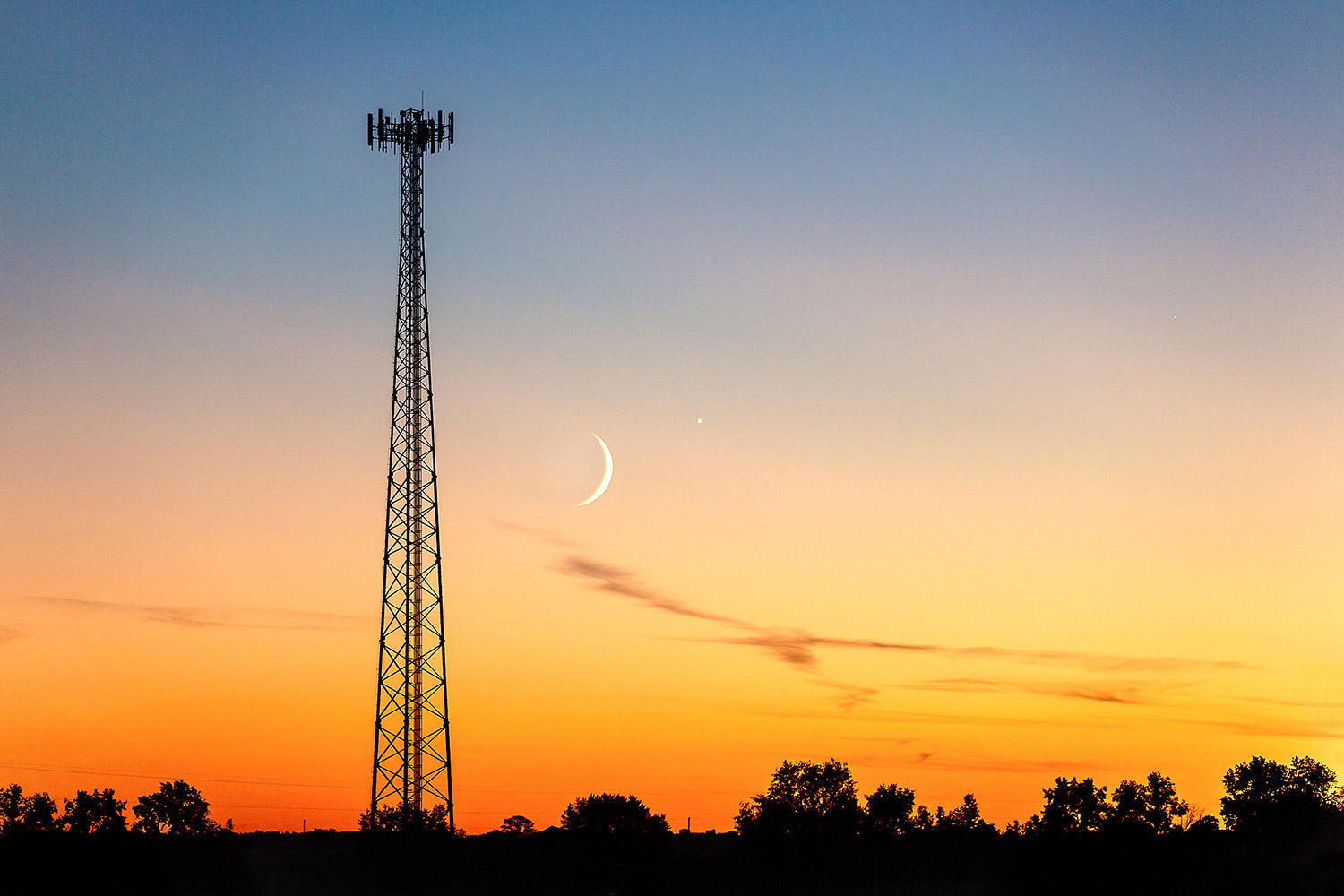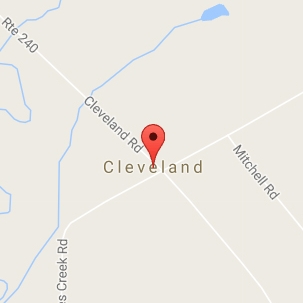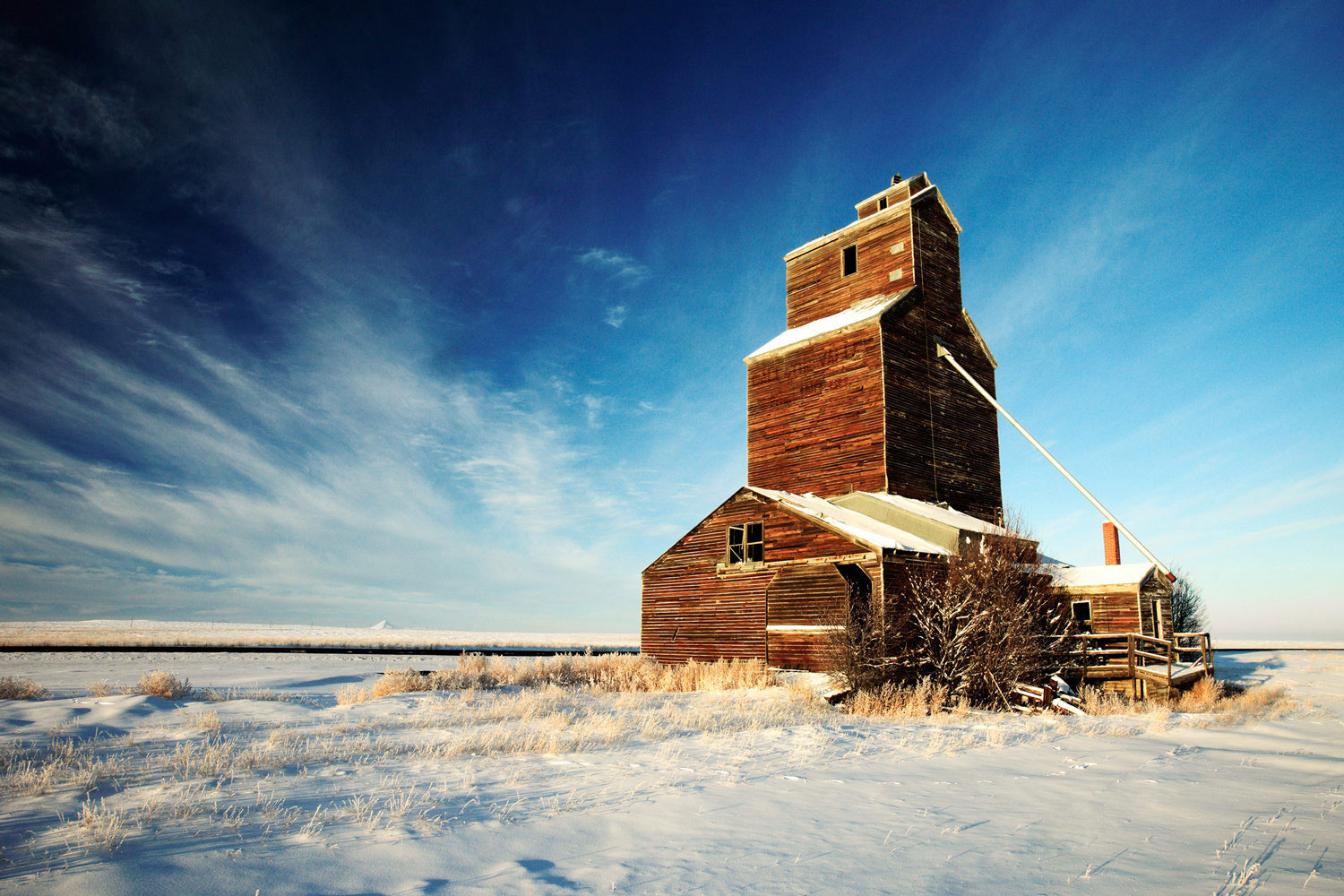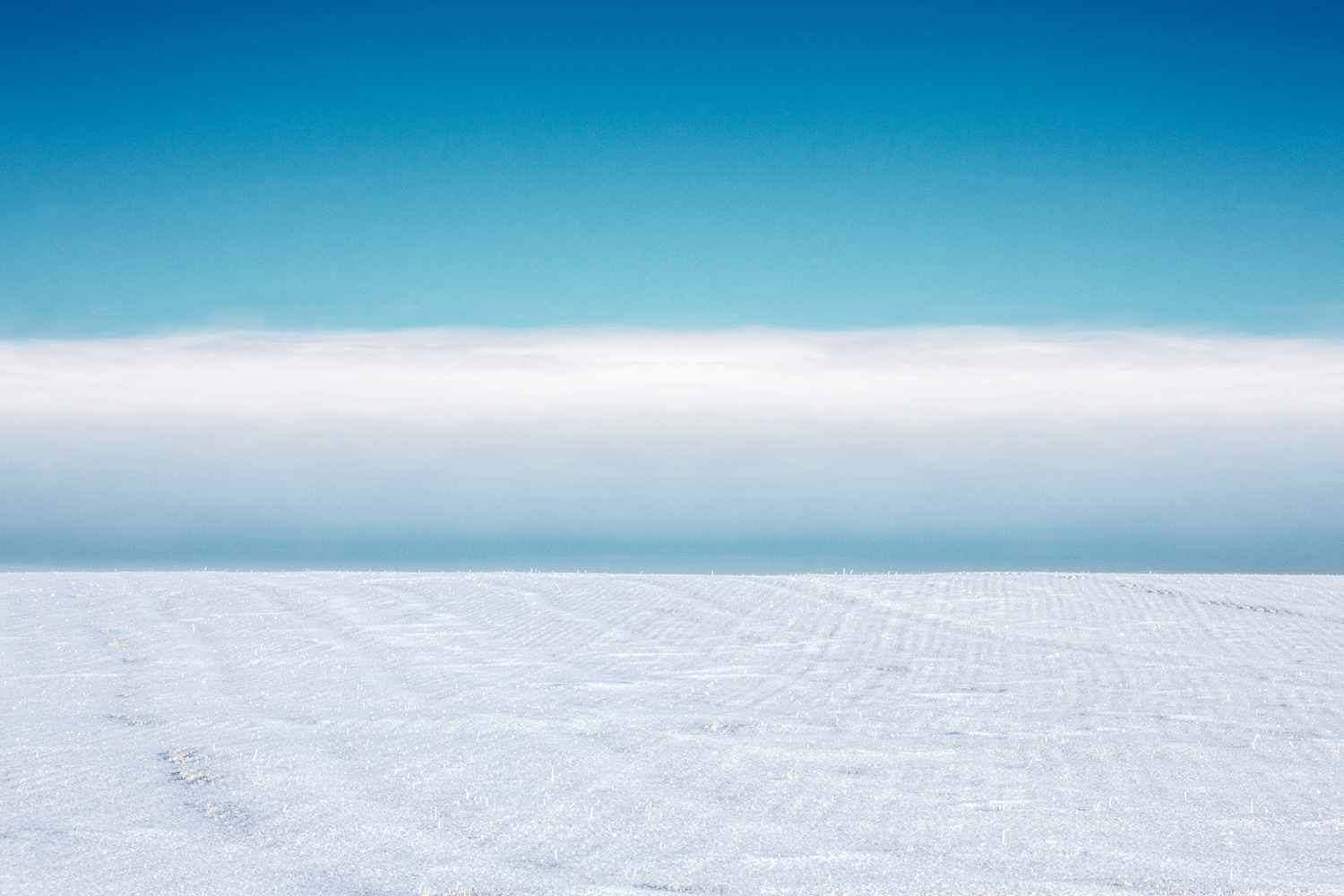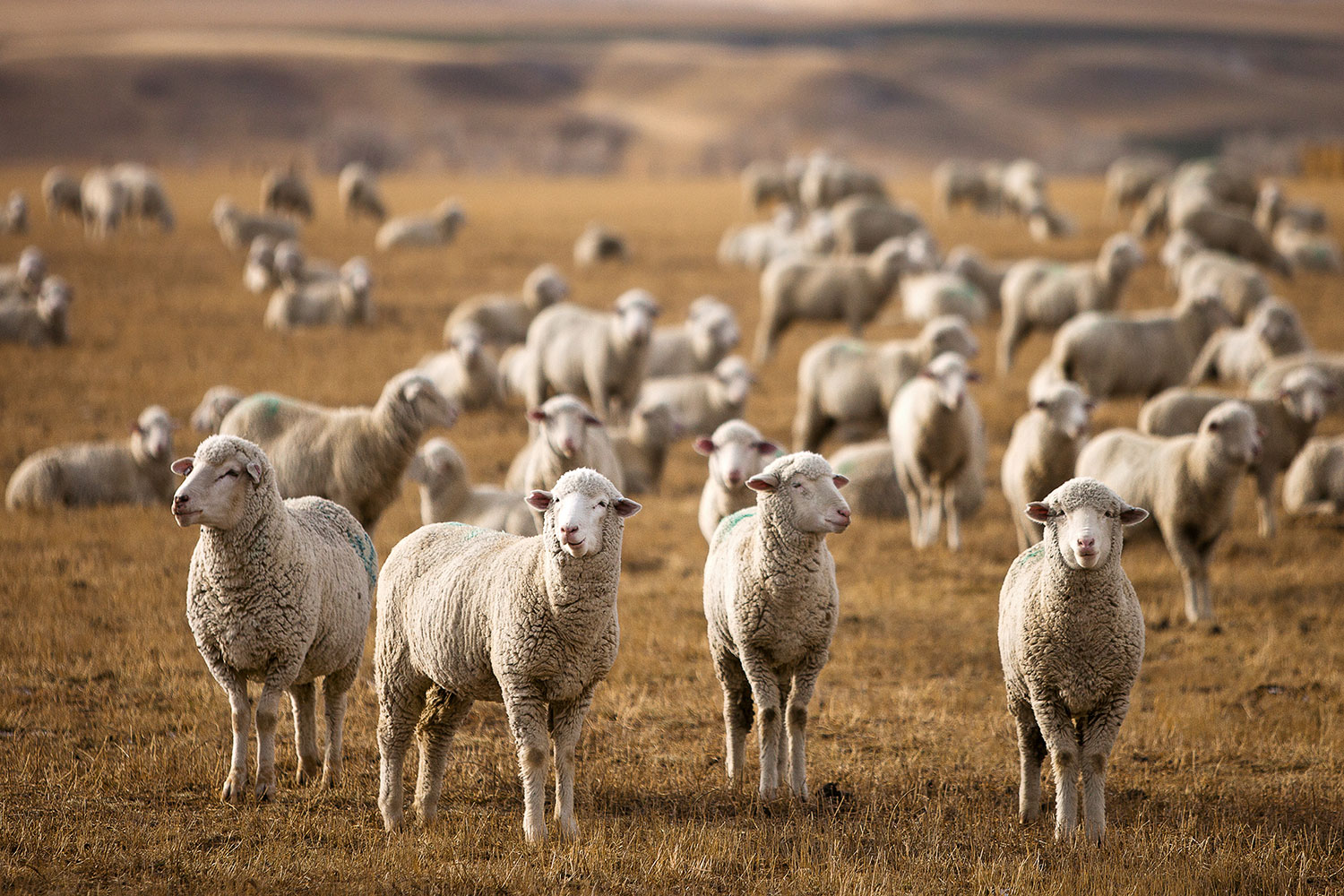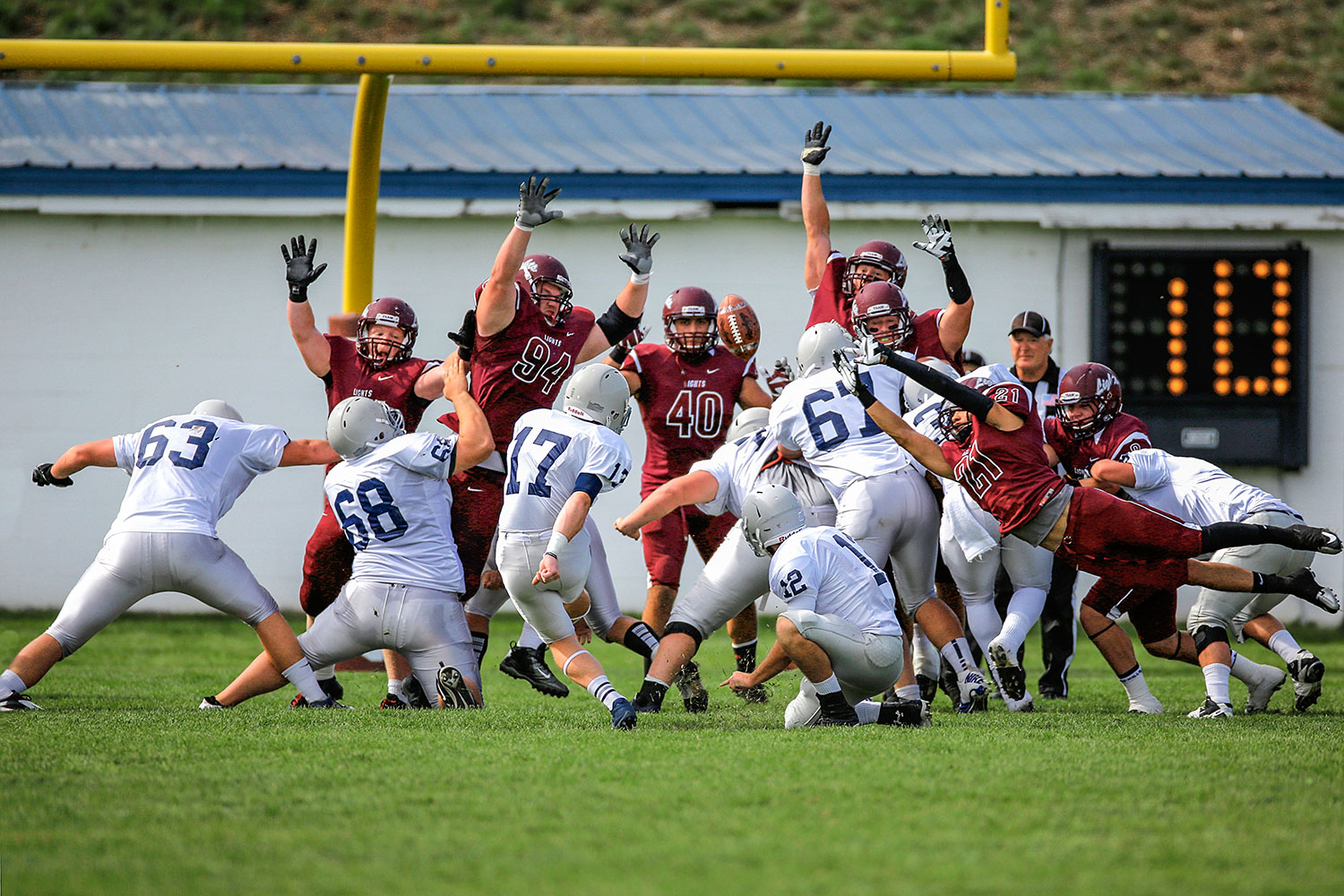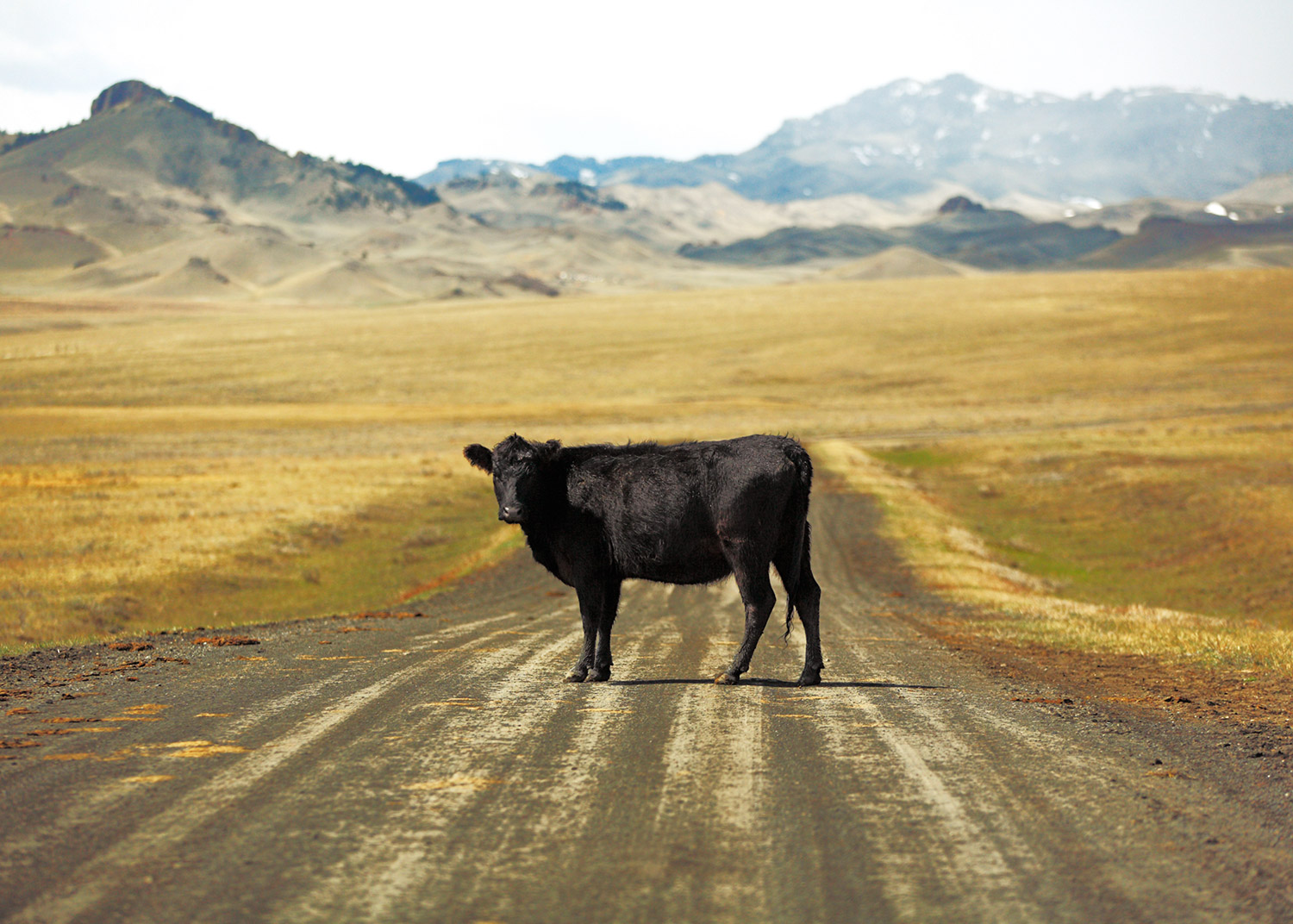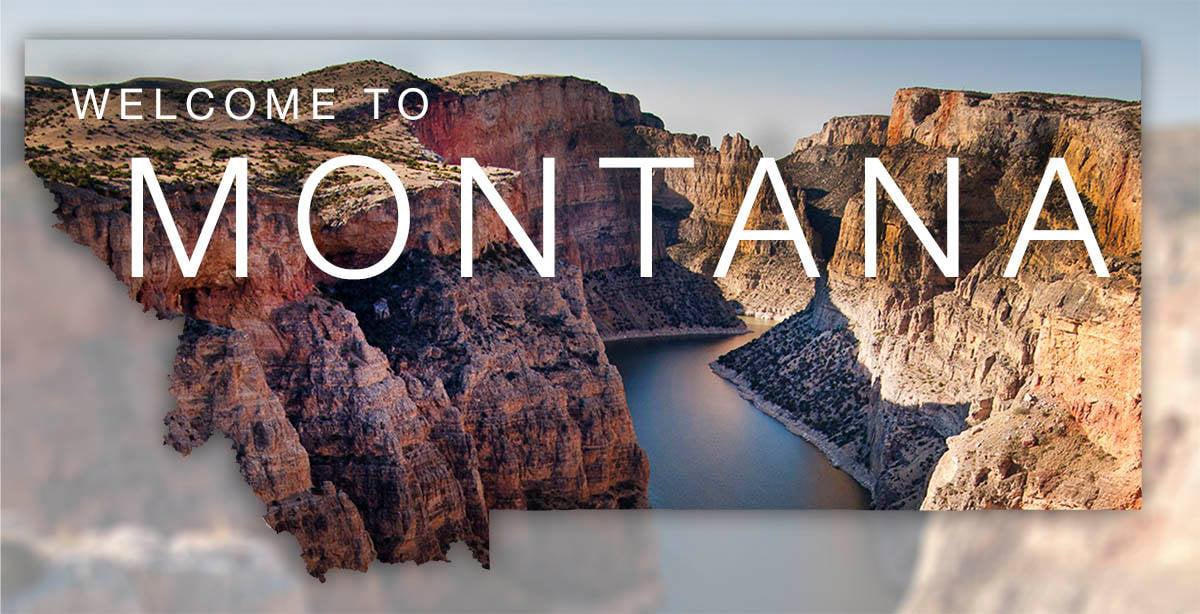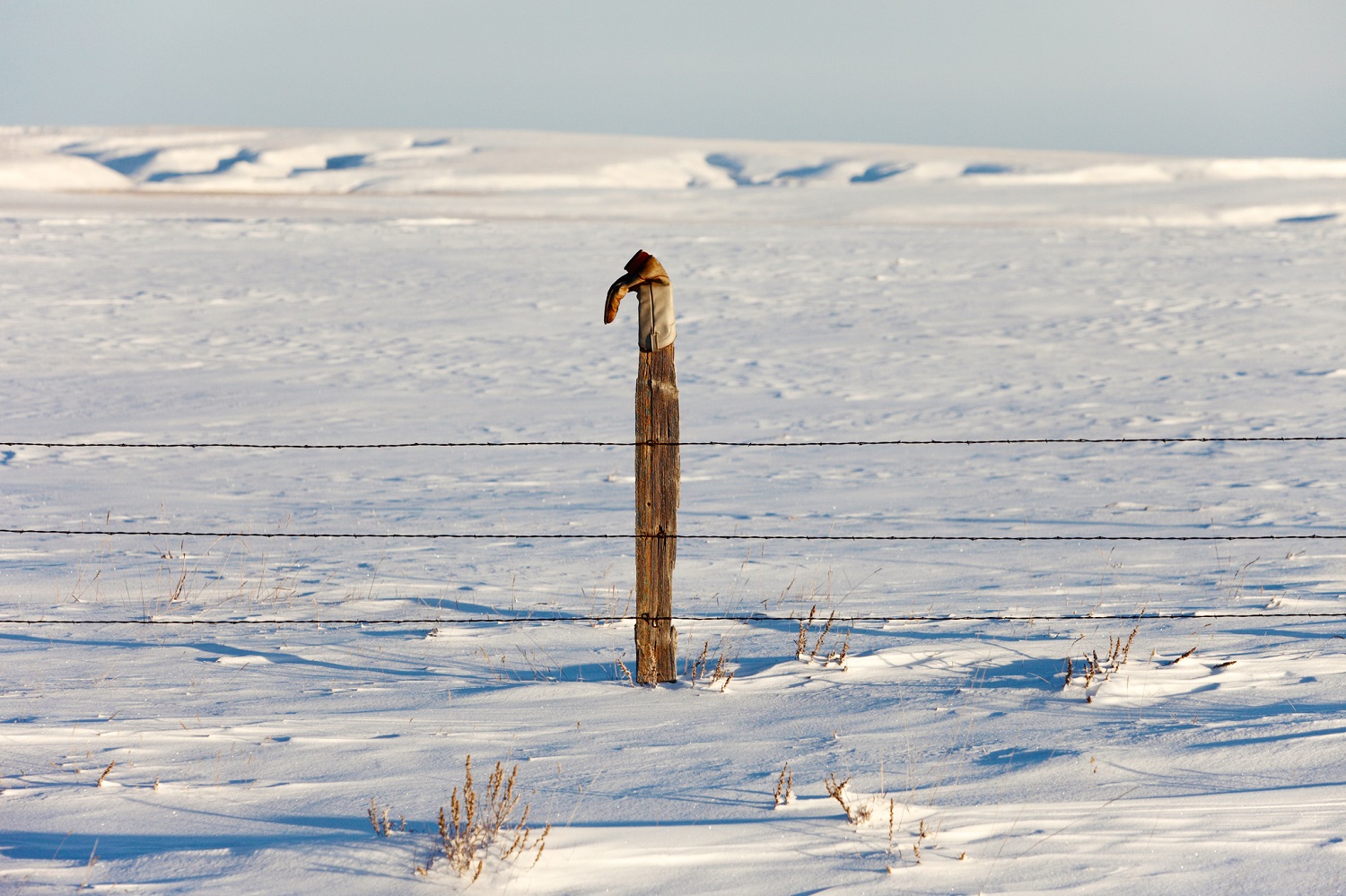Four sheep stand guard in a large flock of sheep outside of Harlowton, Montana. → Buy a Print
Montana is rich with history. And one of the things you will find that when you come to Montana there are many, many remarkable stories about Montana's history. This was the lesson I learned when I began making photos of Montana. And one of the more colorful people from Montana's past (and there are many) is Charles M. Bair.
Charles Bair came to Montana as a lowly conductor on the Northern Pacific Railroad in 1883, but left a very rich man. He made a fortune in the gold rush and another tidy sum investing in oil and real estate, but none of that would have been possible had it not been for one thing...sheep.
Widely regarded as one of the most successful sheep ranchers in the world, Bair owned more than 300,000 of them--more sheep than Montana had people at the time.
I spoke to an older fella outside of White Sulphur Springs who worked on Bair's ranch many years ago. He said Bair was an extremely proud man and a legend in these parts. Someone asked Bair once how much land he owned. Unbelievably, Bair wasn't sure but said, "Every section from White Sulphur Springs to Harlowton; and every other section from there to Judith Gap."
To put that into perspective: A section is one square mile and 640 acres in size. On a typically swift Montana highway it would take you well over an hour to drive from one end of Bair's ranch to the other. And at the height of his success, Bair's operation controlled nearly 90% of all the rail traffic leaving the Harlowton, Montana station.
One day, while loading sheep in Harlowton Mr. Bair bumped into a man who was frantically trying to lease an available rail car to transport his own sheep to market. Unfortunately, the caboose had already been attached to the end of a line of 100 or more rail cars; all of which were plum full with Bair's sheep headed east. Bair, however, went out of his way to help the anxious man who obviously didn't know who Bair was. Bair instructed his employees to unhitch the caboose, attach another railroad car, and put the caboose back in place at the end.
Once the train left the station and his sheep were headed safely to market the man thanked Mr. Bair for his assistance. During the ensuing conversation the man asked Mr. Bair how many sheep he owned. Once again, Mr. Bair didn't have a clue. "I'm not sure," Bair said, "How many sheep do you own?" The man, a proud sheep rancher himself, stuck out his chest and proudly said, "2000!" To which Mr. Bair quickly replied, "Son, I own more sheep dogs than you have sheep."
Mr. Bair died in 1943, and with his passing the people of south central Montana saw the passing of the glory days on the Bair Ranch. And though Bair is long gone, his legacy lives on as many Montanans to this very day still raise many sheep in a place Bair once called home.


